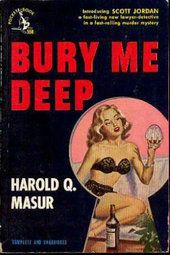
“There are songs that come free from the blue-eyed grass, from the dust of a thousand country roads. This is one of them. – Robert James Waller
And so begins a story that you will never forget. . .”
– inside book-leaf, 1992
“When The Bridges of Madison County by Robert James Waller came out in 1992, it was THE book to read. Everyone was talking about it’with good reason. It’s a good book, a short but satisfying read. It’s a love story–an affair to remember, so to speak. In the summer of 1965 Francesca Johnson was a farm wife who meets Robert Kincaid, a National Geographic photographer, passing through town. He’s interested in photographing the covered bridges in the area and asks Francesca for directions. When she offers to show him, there’s an instant chemistry spark that slowly ignites into full-blown passionate fireworks. Her family is out of town, which is quite convenient for them. But this isn’t just a “wham-bam-thank-you-ma’am” relationship. Robert and Francesca find true love. He heaps on the romantic mush she longs for and her husband is not built for. He tells her he loves her and cinches the deal by saying things like: “In a universe of ambiguity, this kind of certainty comes only once, and never again, no matter how many lifetimes you live.” Or how about: “I’m no longer sitting next to you here on the grass. You have me inside of you as a willing prisoner.” Great stuff for a lonely farm wife.”
– Annette S. (annette-s), PaperBackSwap Member
“The Bridges of Madison County was a book I had had sitting around for a while. I had a day or evening with no plans, so I decided to read it to see what it was all about. I ended up reading it in one sitting. I laughed, I cried, I ached, and I (mentally) pleaded for what I wanted to happen. Sometimes I was right, sometimes the author went a different way. The author did an excellent job of making the characters seem real. Tears were streaming down my face by the end. I know I sat for a while after I’d finished, just pondering the story.”
– Cathy W. (Firefly), PaperBackSwap Member
“My favorite book of the year . . . one of the most romantic, stirring tales of true love I’ve ever read”.
-Oprah Winfrey, 1993
“I was in college when I read The Bridges of Madison County. I was full of hope and excitement. I was young, in love, and believed the world was full of endless possibilities. Reading the love story of Robert and Francesca was so poignant and expressed all of the intense emotions that go into love unexpected but embraced. I felt almost like I was eavesdropping into their moments that should have been their own but it was too beautiful to look away.
– Mirah W. (mwelday), PaperBackSwap Member
“The human heart has a way of making itself large again even after it’s been broken into a million pieces.”
– Robert James Waller, The Bridges of Madison County
“If you have ever had a love that you knew would never work out but would last forever in your heart you will be able to relate to this beautifully written story. Somehow knowing that it can not be more than the moment, makes your feelings a million times stronger for the times you are together. I cried thru almost the whole book. Beautiful love story, brings out lots of emotion, well worth reading over and over.”
– Connie A. (jazzysmom), PaperBackSwap Member
The one true love, from a small chance meeting. Touches anyone who has ever found and lost the love of his/her life.
– Nancy B. (AcornNancy)
“The Bridges of Madison County, the novel, sold 60 million copies starting in 1992 and wasn’t replaced as America’s favorite novel until The DaVinci Code came out 11 years later. There was also a movie version that featured Clint Eastwood and Meryl Streep as the passionate lovers. So clearly, there is something in the story that people respond to. But you don’t choose a popular title because it will sell tickets. You choose it because its popularity means it’s one of the old stories somehow, one of the stories we need to hear again and again.
But I was drawn to this material as a human being, not just as a writer. By 1965, when the musical takes place, women across the country were beginning to come out of the kitchen and take an active role in their communities. Women’s voices began to be heard on the radio; Joan Baez, Joni Mitchell, Odetta, Aretha Franklin, and Patsy Cline. Women began joining war protest movements, as they had during the Civil Rights movement, and as they would again in the Women’s movement. Francesca’s growing awareness of her isolation in her house, and her ability to express this to her husband is hard for her, culturally and personally. What she doesn’t know is that she is joining the chorus that will make a different life possible for all the generations of women who come after her, including me.”
– Marsha Norman, Pulitzer Prize-winning Playwright and Author







